Pickleball’s soaring popularity isn’t just about the fun and camaraderie it brings; it’s also about the thrill of strategic play. Whether you’re a seasoned player or new to the court, mastering shot selection is key to outsmarting opponents and elevating your game.
Choosing the right shot at the right time can turn the tide of any match. From powerful smashes to delicate dinks, the variety of shots in pickleball allows for a dynamic and strategic game. Let’s dive into the strategies that can help you make smarter shot selections and keep your opponents guessing.
Understanding the game of pickleball
Pickleball, a paddle sport that combines elements of tennis, badminton, and ping-pong, has seen a meteoric rise in popularity. Played both indoors and outdoors on a badminton-sized court with a slightly modified tennis net, it offers engaging physical and strategic gameplay. The game can be played as singles or doubles, making it accessible and appealing to a wide range of ages and skill levels.
One of the game’s unique features is the use of a perforated plastic ball, similar to a Wiffle ball, which significantly affects how players strategize their shots. The paddle, smaller than a tennis racket but larger than a ping-pong paddle, also plays a crucial role in shot execution.
Pickleball is governed by simple rules that make it easy to learn but hard to master. For instance, the no-volley zone, or “kitchen,” is a seven-foot area on either side of the net where players are not allowed to take the ball in the air. This rule encourages strategic placement of shots and a chess-like approach to point construction.
Key Strategies in Pickleball
To excel in pickleball, players must master various shot types and understand when to use them. Here’s an overview of essential strategies:
- Serve and Return: A strong serve can set the tone of the game, and a well-executed return can seize early control of the rally. Players often aim for deep serves and returns to push opponents back and open up the court.
- Dinking: A soft, controlled shot that lands in the opponent’s kitchen. Dinking forces players to engage in precision play, moving the opponent around and creating opportunities for more aggressive shots.
- The Drive: A powerful, low shot aimed at an opponent’s feet or open space. The drive is effective for gaining the offensive advantage or disrupting the rhythm of the game.
- Lobbing: A high, deep shot that forces the opponent to the back of the court. Lobs can be used defensively to get out of tough situations or offensively to catch opponents off-guard.
| Year | Number of Players (U.S.) |
|---|---|
| 2018 | 3.1 million |
| 2019 | 3.3 million |
| 2020 | 4.2 million |
| 2021 |
Importance of shot selection in pickleball

In pickleball, mastering shot selection isn’t just about hitting the ball; it’s a refined skill that blends precision, timing, and strategic thinking. The difference between a good player and a great one often lies in their ability to choose the right shot at the right time. This nuanced aspect of the game is critical for those looking to elevate their play and keep their opponents on their toes.
Each shot in pickleball carries its own purpose and potential. For instance, a well-placed dink can pull players out of position, making them vulnerable to subsequent attacks. Conversely, a powerful drive shot might back opponents off the net, giving the hitter control of the pace and flow of the game. Understanding when to deploy these different shots can significantly disrupt an opponent’s rhythm and strategy.
Strategic Use of Shots
Pickleball is not just a physical game but also a mental one. Players who excel in shot selection are often those who are thinking two or three moves ahead, like a chess player. They’re not just reacting to the ball; they’re anticipating their opponent’s next move and countering before the opponent even knows what hit them.
- Dinks: Effective in drawing opponents closer to the net and setting up opportunities for a lob or a passing shot.
- Drives: Useful for pushing opponents back and gaining the upper hand in court positioning.
- Lobs: Ideal for when opponents are too close to the net, creating a defensive challenge for them.
- Drop Shots: Allow players to regain control of the pace by bringing opponents forward and then exploiting gaps in the court.
Incorporating a mix of these shots into one’s game plan not only keeps the opponent guessing but also provides a strategic advantage. Players must continuously adapt and adjust their shot selection based on the game’s flow and their opponent’s weaknesses.
Adapting to Opponents
No two games of pickleball are the same, and versatility in shot selection becomes a player’s greatest asset. Observing and adapting to an opponent’s playing style is key. If an opponent struggles with mobility, for instance, alternating between drop shots and lobs can be effective in exploiting their limitations. Similarly, against a strong net player, driving shots that force them to move back can neutralize their advantage.
Analyzing your opponent’s weaknesses

In the fast-paced world of pickleball, seizing every opportunity to gain a strategic upper hand is crucial. Analyzing your opponent’s weaknesses plays a key role in formulating a winning strategy. This continuous evaluation process begins right from the first serve and evolves with each play.
Firstly, observation is key. Players should watch for patterns in their opponent’s movements and shot choices. For example, some players might struggle with backhand shots, while others may falter when forced to quickly switch between backhand and forehand. Recognizing these patterns can allow players to tailor their shot selection strategically, aiming to exploit these weaknesses.
Footwork and stamina also provide a wealth of information. Players who demonstrate less agility or slower speed can be challenged with drop shots or lobs, forcing them to cover more ground. Similarly, identifying opponents with weaker stamina can lead to a strategy of extending rallies, thereby capitalizing on their fatigue.
Another aspect to observe is the emotional and psychological state of opponents. Players who show signs of frustration or impatience may make more mistakes if pressured. Incorporating a mix of unexpected shots like sudden drives after a series of dinks could push such opponents into making unforced errors.
Communication between partners in doubles play also offers a window into potential weaknesses. Teams that communicate poorly may have difficulty coordinating their movements and shots, creating opportunities for their opponents to find gaps in their defense.
Lastly, the effectiveness of a player’s serve and return can hint at their overall confidence and skill level. A player struggling with their serve may be less confident, offering an opportunity to apply more pressure with aggressive returns.
By carefully observing and analyzing these various components of an opponent’s gameplay, players can craft a nuanced strategy that targets these weak points. This continuous process of observation, analysis, and adaptation guides players towards smarter shot selection and ultimately, a more strategic gameplay.
Shot selection based on court positioning
In the fast-paced game of pickleball, one’s position on the court significantly dictates the optimal shot selection. Understanding this dynamic aspect of the game allows players to tailor their strategies based on both their and their opponents’ locations. This strategic depth adds a layer of complexity and excitement to pickleball, making court positioning an essential skill for any player looking to advance their game.
When players find themselves close to the net, the priority shifts towards soft, precise shots like dinks. Dinking isn’t just about avoiding a fault by hitting the ball into the kitchen; it’s a strategic move designed to pull opponents closer to the net, potentially setting up a winning drive or lob when they least expect it. The dink becomes a versatile tool in a player’s arsenal, especially when tight to the net, creating opportunities for aggressive follow-up shots.
Conversely, when positioned at the baseline, players have the chance to open up their shot selection with deeper, more powerful drives or lobs. From this distance, a well-executed lob can catch an opposing player unprepared, especially if they’ve crept too close to the net, expecting shorter shots. Drives from the baseline add an element of surprise and force opponents to react quickly, potentially leading to unforced errors.
Mid-court positioning, often considered no man’s land, presents its own set of challenges and opportunities. The key here is versatility. Players caught in this area need to be prepared to switch between offensive and defensive play. Utilizing drop shots from mid-court can be an effective strategy, creating a scenario where the opponent must rush forward, often leading to awkward returns and advantageous situations for the player who initiated the drop shot.
Strategic movement and positioning play a crucial role in determining the most effective shot selection:
- Moving Forward: Encourages the use of soft shots like dinks or quick volleys, aiming to catch the opponent off-guard.
- Retreating Back: Signals the opportunity for deeper shots, such as lobs or drives, especially if the opponent has moved in closer to the net.
Using the right shot for offensive and defensive play
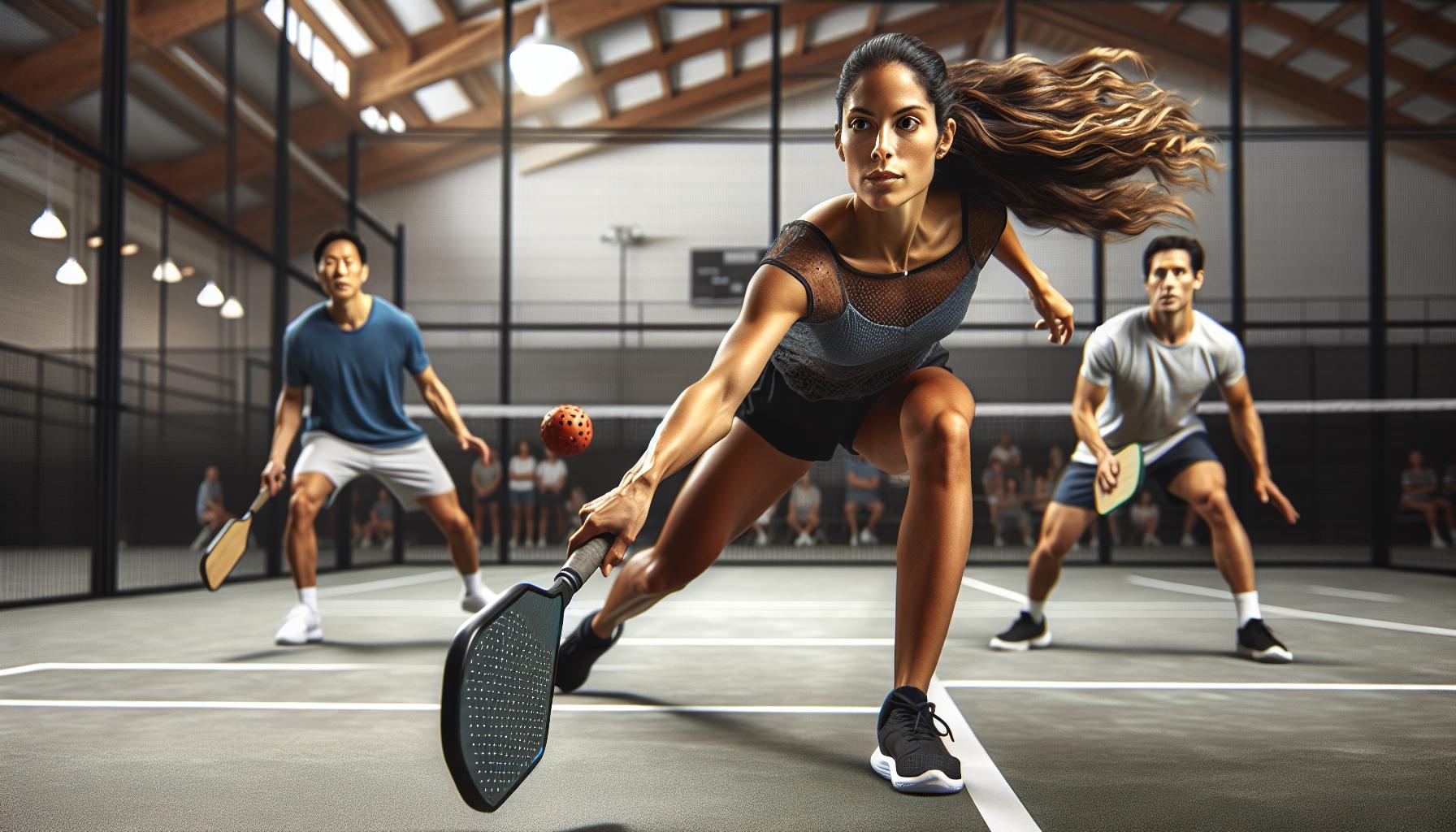
In the game of pickleball, understanding when to use offensive shots versus defensive shots can make a significant difference in a player’s game strategy. Players often have to make quick decisions on whether to put pressure on their opponents or to play it safe by defending their court. The trick lies in recognizing the situation and responding with the most effective shot.
Offensive Shots
When a player sees an opening or wishes to take control of the rally, offensive shots are the way to go. These shots are intended to push the opponent back, create difficult angles, or force errors.
- Drives are powerful, direct shots aimed at reducing the opponent’s reaction time.
- Smashes capitalize on high balls, enabling players to hit downward with force and speed.
- Spin shots add a twist to the ball’s trajectory, complicating the return for the opponent.
Strategically, players utilize offensive shots when they’re in a position of strength, either due to advantageous court positioning or when they’ve successfully maneuvered their opponents out of position. The key is not just power but precision and timing to exploit weaknesses in the opponent’s play.
Defensive Shots
Conversely, defensive shots are crucial when players find themselves under pressure. These shots are about recovery and repositioning, allowing players to reset the point and prepare for their next move.
- Lobs are high-arcing shots that give players time to get back into position.
- Dinks are gentle, lofted shots just over the net, forcing opponents to move forward and ideally creating opportunities for more aggressive plays next.
- Blocks and neutralizing shots take the pace off an opponent’s powerful hit, helping to turn the tide of the rally.
Defensive play isn’t about passive resistance; it’s an active strategy to regain control of the game. Players adept in defensive shots know how to use their opponents’ power against them, changing the flow of the game and setting the stage for a counterattack.
Balancing Offensive and Defensive Strategies
The hallmark of a skilled pickleball player lies in their ability to seamlessly switch between offensive and defensive strategies. Recognizing the right moment to change gears can catch opponents off guard and shift the momentum of the game. This decision-making process is influenced by several factors, including the opponent’s skill level, court positioning, and the current score.
The power of the drop shot
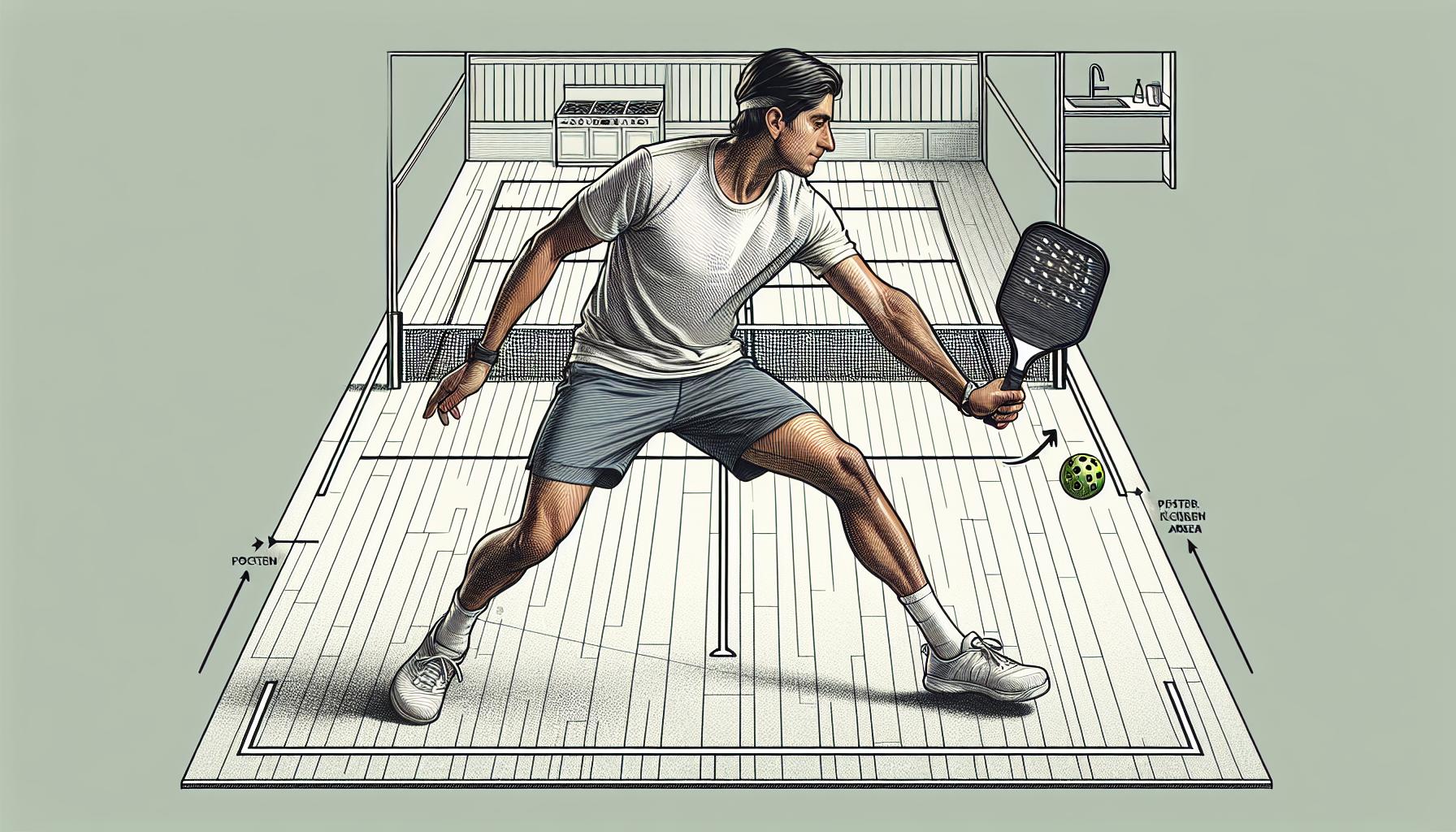
The drop shot in pickleball is often hailed as a game changer, and for good reason. This subtle yet potent maneuver entails hitting the ball just enough so that it travels over the net but lands softly in the opponent’s kitchen, the non-volley zone situated 7 feet from the net. The aim is to make it difficult for opponents to return with an aggressive shot, without stepping into the kitchen. When executed correctly, the drop shot not only forces the opponent to rush forward but also limits their reply options, offering the executing player a strategic advantage.
Executing a successful drop shot requires a blend of precision, timing, and understanding of the opponent’s positioning. Players need to keep an eye on their counterpart’s location and anticipate their movements. If an opponent is positioned deep in their court or anticipating a power shot, a well-placed drop shot can catch them off guard. The effectiveness of this technique lies in its ability to abruptly change the pace and flow of the game, making it a powerful tool in the hands of a strategic player.
- Soft Hands: Developing a gentle touch or ‘soft hands’ is crucial. This involves relaxing the grip on the paddle and using a controlled swing to finesse the ball over the net.
- Ball Spin: Applying a slight backspin on the ball can enhance the drop shot’s effectiveness by reducing its bounce and speed upon landing, making it harder for opponents to return.
- Predictability Avoidance: Using the drop shot too frequently can make a player predictable. Mixing up shots keeps opponents guessing and enhances the element of surprise.
- Practice and Patience: Mastering the drop shot requires regular practice and patience. It’s a skill that develops over time, with persistent effort and strategic use during gameplay.
In addition to being a potent offensive weapon, the drop shot serves a defensive purpose as well. It can be particularly useful for players who find themselves out of position or who need to regain control of the game’s pace. By resetting the point and bringing the play back to a neutral state, players can buy time to reposition themselves and prepare for the next move.
Mastering the art of the kitchen dink

In pickleball, the “kitchen” refers to the non-volley zone, a critical area extending seven feet on either side of the net. Mastering shots within this zone, especially the dink, plays a pivotal role in strategic gameplay. The dink is a soft, arching shot designed to drop into the opponent’s kitchen, making it difficult for them to execute a powerful return. This technique requires finesse and precision, as the objective is not just to keep the ball in play but to outsmart the opponent and create opportunities for attack.
Effective use of the kitchen dink hinges on understanding key principles:
- Patience: Often, winning the dink rally isn’t about power but waiting for the right moment to exploit an opponent’s lapse in position or concentration.
- Placement: Aim for the opponent’s feet or weak spots. Forcing them to hit upward can lead to advantageous situations for the player.
- Consistency: The ability to repeatedly execute precise dinks puts pressure on the opponent, increasing the likelihood of errors on their part.
Players should also be mindful of their body positioning and paddle readiness when preparing for a dink shot. Staying on the balls of their feet and keeping the paddle up ensures they can react quickly to the opponent’s shots, maintaining control of the rally. Moreover, disguising the dink with similar pre-shot movements used for other shots can add an element of surprise, catching opponents off-guard.
Practicing the Kitchen Dink
To excel in executing the kitchen dink, players should:
- Integrate drills focused on touch and precision, such as aiming for specific quadrants in the opponents’ kitchen.
- Simulate game scenarios in practice sessions, where they and their partner exchange dinks, gradually introducing variations in speed and spin.
- Study opponents’ tendencies, understanding that every player has a unique style and adapting the dink strategy to exploit their weaknesses.
- Transitioning from dinks to drives or lobs when the opportunity presents itself. Catching the opponent in the kitchen with a hard drive or deep lob can shift the momentum of the game.
- Developing a versatile game where the player is comfortable
Strategies to mix up your shots
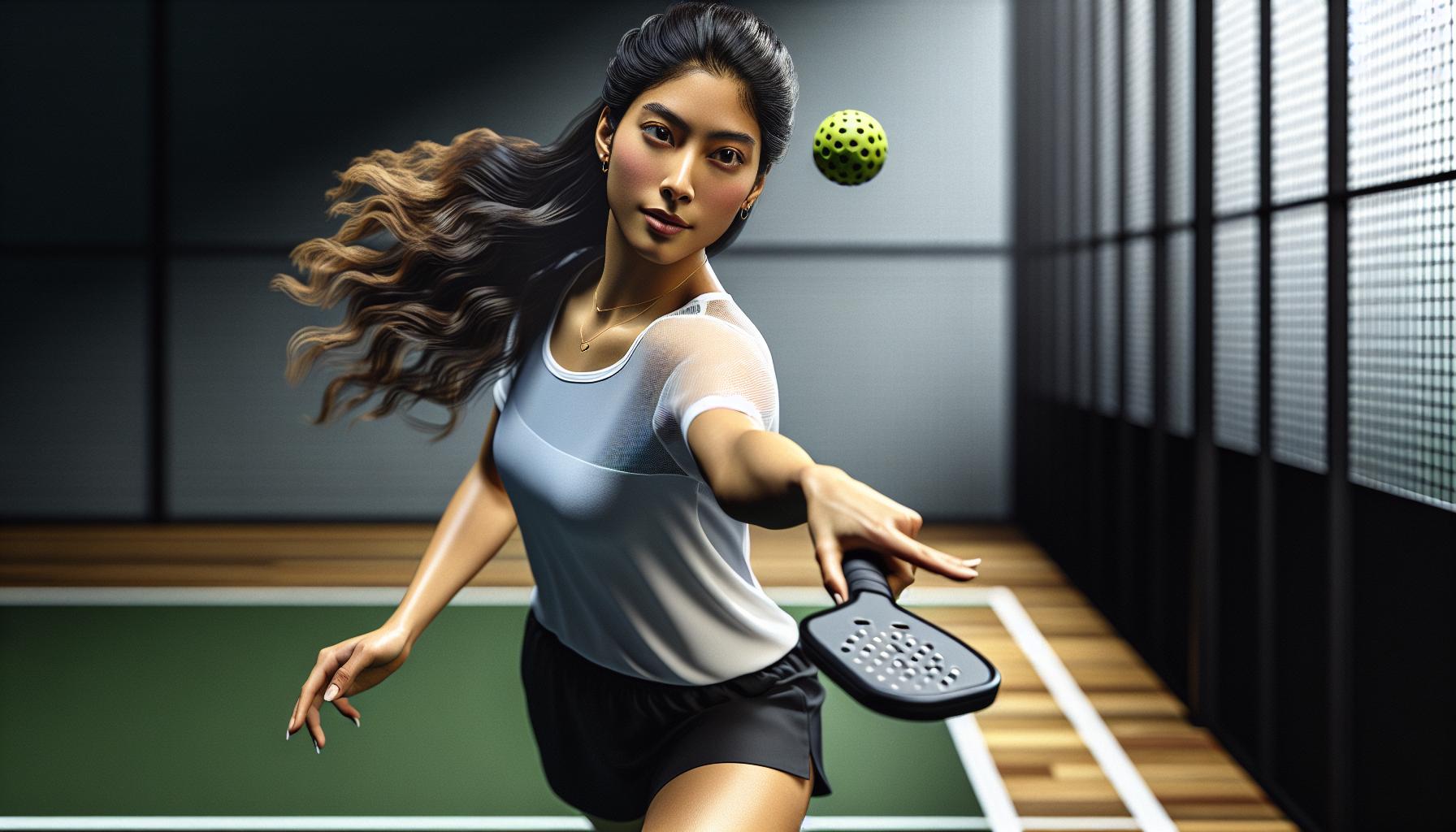
In the dynamic world of pickleball, unpredictability can be a player’s greatest asset. Players who master the art of mixing up their shots keep their opponents guessing and on the defensive, creating opportunities to gain the upper hand in a match. Developing a variety of shots and knowing when to use them can significantly influence a game’s outcome.
Variety Is Key in keeping an opponent off-balance. Players should aim not just for diverse shot types but for varying the speed, angle, and spin of their shots. For instance, following a powerful drive with a soft dink forces opponents to constantly adjust, thereby increasing the chance of errors on their part. This strategy requires players to be adept in both power and precision, creating a well-rounded game.
Incorporating Spin
Adding spin to the ball introduces an additional layer of complexity and strategy. Spin affects the ball’s trajectory and bounce, making it challenging for opponents to predict and return shots effectively. There are two primary types of spin in pickleball:
- Topspin causes the ball to rotate forward, dipping faster and bouncing higher off the ground. It’s particularly effective for groundstrokes and serves.
- Backspin (or slice) causes the ball to rotate backward, leading to a slower, lower bounce. This is useful for drop shots and keeping the ball in the kitchen.
Players should practice both types of spin to enhance their shot unpredictability. By mastering spins, players can add a subtle yet powerful element to their strategy, making it harder for opponents to read their shots.
Change of Pace
Another effective strategy is the deliberate change of pace during a rally. Alternating between fast and slow shots can disrupt an opponent’s rhythm, leading to forced errors or weaker returns that can be easily exploited. For example, a sudden slow drop shot after a series of hard drives can catch an opponent off-guard, forcing them out of position. Conversely, a sudden drive after a series of soft dinks can overwhelm an opponent’s defense.
Anticipating your opponent’s shots

As players delve deeper into the nuances of pickleball, they quickly realize the significance of anticipation in their strategic arsenal. Anticipating an opponent’s shots isn’t about psychic powers; it’s about keen observation, pattern recognition, and a sharp mental game. Players who excel in this area often seem to be a step ahead, ready and waiting for the ball no matter how skillfully it’s played by their adversary.
Observation is key. During the course of a match, attentive players can pick up on certain habits or preferences their opponents exhibit. Some might favor their backhand over their forehand, while others could show a pattern of opting for a particular shot under pressure. This valuable information allows players to predict possible shot selections and position themselves accordingly, thus gaining a strategic edge.
Incorporating pattern recognition involves watching for repeated sequences or tendencies during play. If an opponent consistently attempts a lob shot following a series of drives, for example, a prepared player can anticipate this move and ready themselves for an effective counter. Recognizing these patterns doesn’t come overnight, but with practice and attention to detail, players can develop this crucial skill, turning opponents’ habits into their own advantages.
The mental game in pickleball is just as important as physical skill. Players who remain focused and mentally engaged can better anticipate moves and counter strategically. They’re constantly analyzing the game, considering their opponent’s next move, and assessing the best responses. This chess-like aspect of pickleball is what makes the game intriguing and complex, appealing to those who enjoy both physical and mental challenges.
Strategies for enhancing anticipation skills include:
- Playing against various opponents: Exposing oneself to different playing styles broadens the ability to anticipate a wider range of shots.
- Watching and learning from others: Observing games, particularly between highly skilled players, can offer insights into effective anticipation and counterplay strategies.
- Mental rehearsal: Visualizing different scenarios and opponents’ potential shots can enhance on-court anticipation skills.
- Drills focused on reaction time: Engaging in drills that improve reaction times can help players become more adept at dealing with unexpected shots.
Conclusion
Mastering pickleball isn’t just about physical prowess; it’s equally about the mind game. The right shot selection, tailored to your court position and the flow of the game, can significantly elevate your play. Whether it’s choosing between offensive and defensive shots, executing a perfect drop shot, or mastering the kitchen dink, each strategy plays a crucial role in outsmarting your opponent. Remember, the key to success lies in versatility and the ability to keep your opponent guessing with a mix of spins, speeds, and shot types. And let’s not forget the importance of anticipation. Observing your opponent’s habits and staying mentally sharp can give you that extra edge. So keep practicing, stay focused, and enjoy the strategic depth that makes pickleball such a fascinating sport.

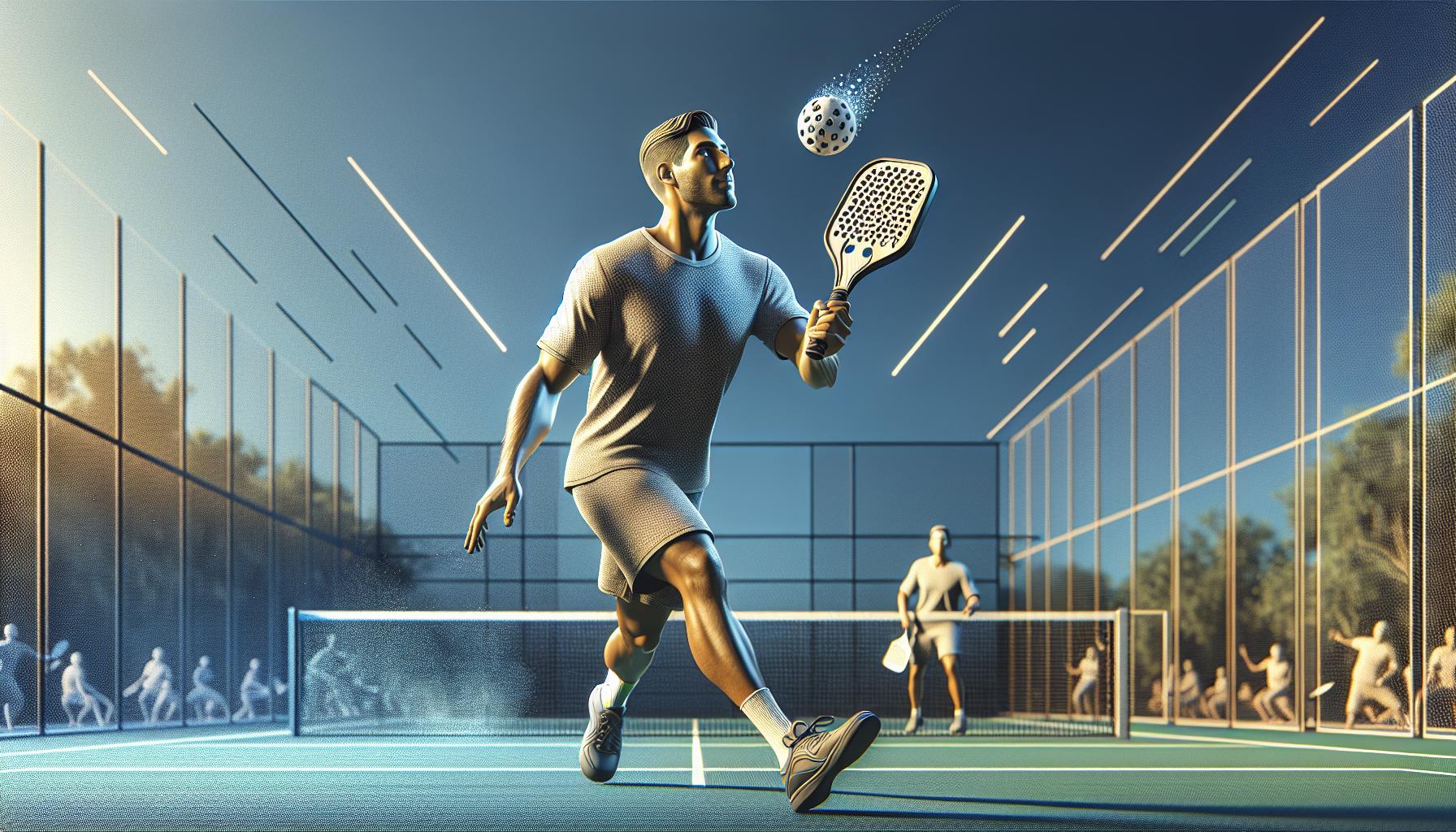









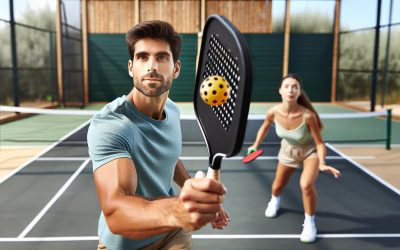
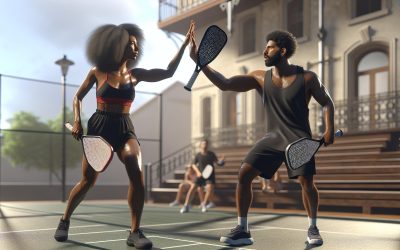

0 Comments